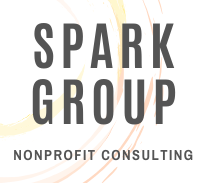Three Tips to Up Your Facilitation Game
In the world of nonprofit leadership, facilitating meetings, focus groups, strategic plans, and various engagements is an integral part of the job. As nonprofit leaders, we often find ourselves in the role of guiding discussions, fostering collaboration, and ensuring that the goals of our organizations are met through effective group dynamics. To excel in this role, we need to continually refine our facilitation skills. In this blog, we'll explore three essential tips to elevate your facilitation game and create more impactful and engaging experiences for your team, stakeholders, and participants.
Tip One: Prepare
The foundation of successful facilitation lies in thorough preparation. Before you step into the facilitator's role, take the time to understand the purpose and objectives of the meeting or engagement. Know precisely what you want to achieve and what outcomes you are working towards.
Additionally, it's crucial to have a clear plan in place. Understand the flow of the event, the timing of each agenda item, and how you will transition between them. Anticipate common questions or challenges that may arise and prepare thoughtful responses. This preparation builds your confidence and ensures that the session stays on track and delivers the intended results.
Tip Two: Be Confident
Confidence is key when you're in the facilitator's seat. Your demeanor and presence set the tone for the entire group. Participants can quickly pick up on any nervousness or uncertainty, which can hinder the effectiveness of your facilitation. To boost your confidence:
Power Poses: Consider adopting power poses before the session. Standing tall with open body language can help you feel more confident.
Peer Perspective: Visualize yourself as a peer rather than an authority figure. This mindset shift can make you more relatable and approachable to participants.
Practice: Practice your facilitation skills, either in front of a mirror, with a trusted colleague, or even through video recording. Rehearsing can help you refine your delivery and boost your confidence.
Remember, confidence is not about knowing everything; it's about having the assurance that you can navigate the discussion and guide participants toward productive outcomes.
Tip Three: Engage
One of the most common pitfalls in facilitation is talking too much. While you may have valuable insights to share, the best facilitation happens when you empower participants to take ownership of the discussion. Here's how to achieve this:
Active Listening: Actively listen to what participants are saying. This demonstrates that you value their contributions and encourages open dialogue.
Interactive Tools: Incorporate interactive tools like Mentimeter or other polling and engagement platforms. These tools can spark discussions, gather instant feedback, and make sessions more engaging.
Activity Design: Invest time in researching and designing activities for small and large groups. These activities should be relevant to your objectives and help participants connect with the content on a deeper level.
Debrief and Contextualize: Always be ready to debrief after activities or discussions. Help participants reflect on what they've learned and how it applies to their work. Contextualizing the content within their experiences makes the learning more meaningful.
In conclusion, effective facilitation is a skill that can be honed over time. By preparing thoroughly, exuding confidence, and actively engaging participants, nonprofit leaders can create more impactful and dynamic sessions that drive their organizations closer to their goals. So, the next time you find yourself in the facilitator's role, remember these three tips to up your game and foster meaningful collaboration and growth within your nonprofit.
Contact us today if you’re looking for a facilitator for your next event.




